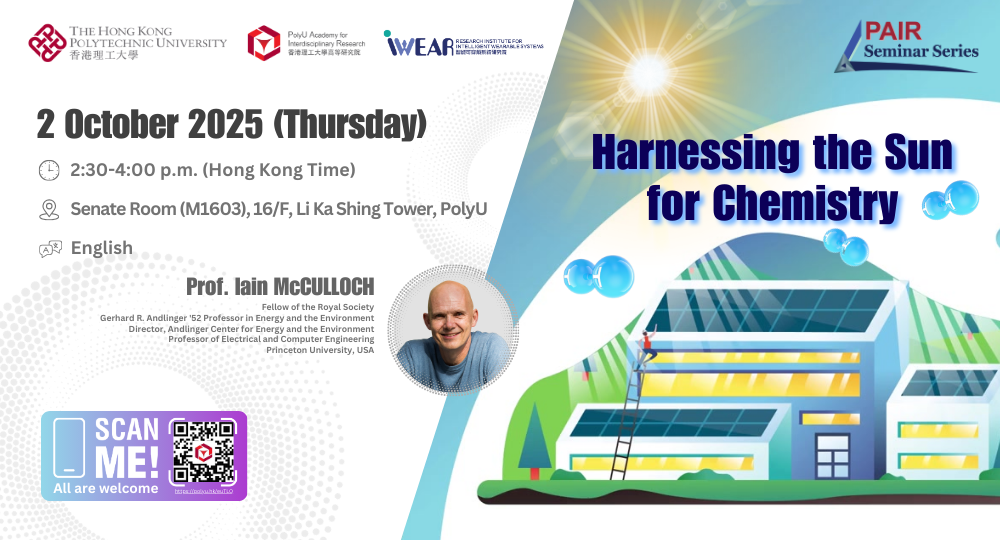PAIR Seminar by Prof. Iain McCulloch on ‘Harnessing the Sun for Chemistry’
Alumni

-
Date
02 Oct 2025
-
Organiser
The PolyU Academy for Interdisciplinary Research (PAIR)
-
Time
14:30 - 16:00
-
Venue
Senate Room, M1603, 16/F Li Ka Shing Tower, PolyU Map
Enquiry
PolyU Academy for Interdisciplinary Research info.pair@polyu.edu.hk
Summary
Abstract
Green hydrogen, produced from water using renewable energy, is expected to become a prominent future fuel, providing clean, carbon free energy for a wide range of industrial applications. It can also provide complementary energy storage in combination with intermittent solar energy. However, competitive economic solar generated hydrogen production on a large scale remains challenging. One promising approach is photochemical water splitting, using light absorbing nanoparticle semiconductors that can drive redox reactions on their surface. Traditionally, wide bandgap inorganic semiconductors have been used for photocatalytic applications. However, these materials almost exclusively absorb UV light which only carries a small fraction (<5%) of solar energy, limiting their efficiency.
In this presentation, the development of photo-catalysts fabricated from organic semiconductors, chemically tuned to absorb strongly throughout the UV-visible spectrum will be discussed. We demonstrate a larger solar to hydrogen efficiency than traditional inorganic photocatalysts, achieved with organic semiconductor nanoparticles that contain an internal donor/acceptor heterojunction between two organic semiconductors with a type II energy level offset. The donor/acceptor heterojunction greatly improves charge generation within the nanoparticles, which in turn greatly improves their hydrogen production efficiency. We demonstrate a substantial increase in the hydrogen production efficiency by tuning the nanoparticle composition. We also observe that the high efficiency of these nanoparticles originates from their ability to generate exceptionally long-lived reactive charges upon illumination, increasing their likelihood to participate in a photocatalytic reaction. In addition, we will discuss solution-processable, linear conjugated polymers of intrinsic porosity for gas phase carbon dioxide photoreduction. Highlighting the potential of processable polymers of intrinsic porosity for use in the gas phase photoreduction of carbon dioxide towards solar fuels.


